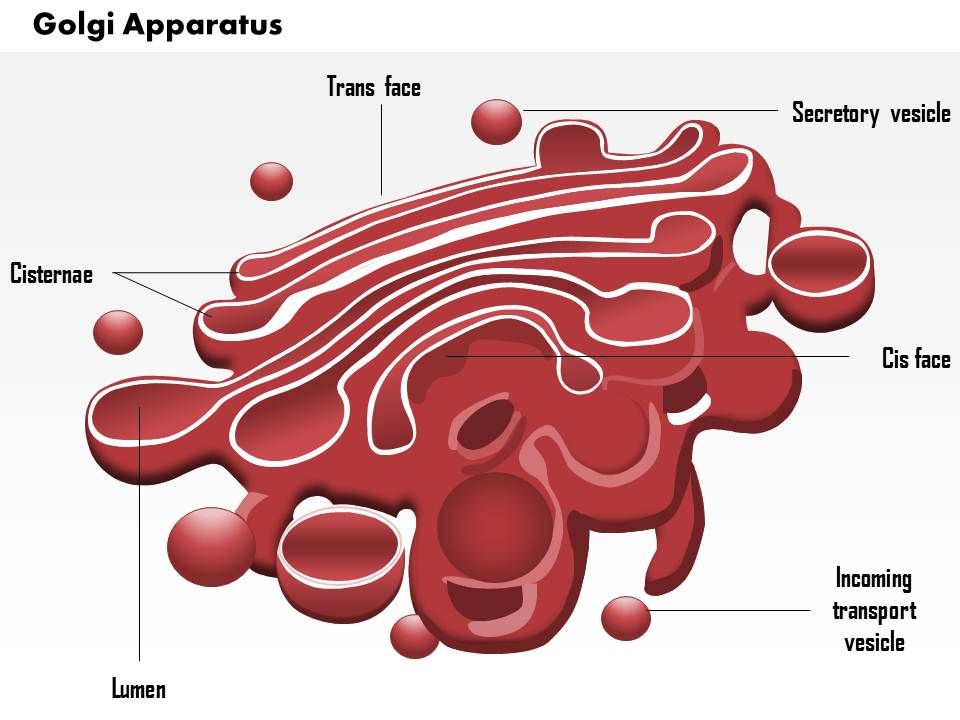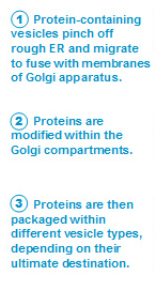- It is a cluster of smooth membranes associated with ER.
- It was first described by Camillo Golgi.
- It has been previously named as Golgi body, dictyosome, lipochondrion etc.
- The term dictyosome is usually used to denote the Golgi body of invertebrates and plants.
- The size and shape of the Golgi complex varies from cell to cell.
- Its membrane is lipoprotein in nature.

It consists of 3 components
- Cisternae (lamellae): These are elongated flattened sacs filled with fluid and piled one upon the other to form stacks. They are arranged in parallel bundles one above the other. The adjacent cisternae are cemented together by inter-cisternal material.
- Vacuoles: These are large spacious round sacs found at the edge of cisternae.
- Vesicles: These are small droplet like structure closely associated with the periphery of the cisternac.
The Golgi cisternae are concentrically arranged near the nucleus with distinct convex cis or the forming face and concave trans or the maturing face.
The cis and the trans faces of the organelle are entirely different, but interconnected.
Functions of Golgi apparatus
- The golgi apparatus principally performs the function of packaging materials, to be delivered either to the intra-cellular targets or secreted outside the cell.
- Materials to be packaged in the form of vesicles from the ER fuse with the cis face of the golgi apparatus and move towards the maturing face.
- A number of proteins synthesised by ribosomes on the endoplasmic reticulum are modified in the cisternae of the golgi apparatus before they are released from its trans face.


Other Fuctions
- The acrosome of sperm is developed from golgi complex
- Golgi apparatus is the important site of formation of glycoproteins and glycolipids.
- It is involved in cell wall formation in plant cells
- It involves in the formation of plasma membrane.
- It involves in the formation of Lysosomes.
- Secretion is done by golgi complex.
- It is involved in the metabolism of sulphate
- Golgi cisternae have the ability to concentrate the secretory products.
- Vesicles store the secretory product until it is demanded.